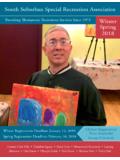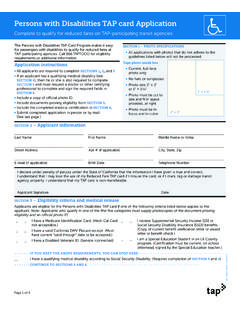Transcription of MASSAGE THEIR APPLICATION TO VARIOUS DISEASES OF …
1 MASSAGEAND THEORIGINAL SWEDISH MOVEMENTSTHEIR APPLICATION TO VARIOUS DISEASES OF THE BODYLECTURES BEFORE THE TRAINING SCHOOLS FOR NURSES CONNECTED WITH THEHOSPITAL OF THE UNIVERSITY OF PENNSYLVANIA, GERMAN HOSPITAL, WOMAN'SHOSPITAL, PHILADELPHIA LYING-IN CHARITY HOSPITAL, THE PHILADELPHIAPOLYCLINIC AND COLLEGE FOR GRADUATES IN MEDICINE, AND THE KENSINGTONHOSPITAL FOR WOMEN, OF PHILADELPHIABYKURRE W. OSTROMFROM THE ROYAL UNIVERSITY OF UPSALA, SWEDENEIGHTH EDITION, REVISED AND ENLARGEDWITH ONE HUNDRED AND TWENTY FIVE ILLUSTRATIONSPHILADELPHIAP. BLAKISTON'S SON & WALNUT STREETCOPYRIGHT, 1918 , BY P. BLAKISTON'S SON & MAPLE PRESS YORK PA-v- MASSAGE and the Original Swedish Movements (3 of 134) [12/6/2000 1:41:13 AM]PREFACE TO THE EIGHTH EDITION The revision of this book was undertaken at the request of the publishers, who stipulated that thenotes left by the late Mr.
2 Ostrom should be followed as much as possible. This has been done, except inthe case of the notes on dislocations, which I have preferred not to use. With the permission of thepublishers I have written the article on dislocations from my own viewpoint. This revision consists mainly in the additional suggestions on treatment, with, here and there, somemodification of statement made necessary by later experience. Beyond this, the original text has not beenchanged -- That is to say, that, where the late author's method of treatment or practice differed butslightly from mine, then no change will be found. There are sixteen entirely new pictures in this edition, which were made under the personal directionof Mr.
3 Ostrom just before his rather sudden death. Some of the old figures in the text have been altered,redrawn or enlarged in accordance with his The conciseness of this book makes it particularly valuable to beginners, who need to learn thoseessentials that constitute the foundation for study and practice of this important branch of the healing SILFVERBERG, G. TO THE FIRST EDITION As the tendency of modern therapeutics is to cure disease by the APPLICATION of the laws of hygiene,the author feels that in presenting this little work to the medical profession, and to those especiallyinterested in the subject, he will be supplying in English a treatise that has long been needed. It is true, several books have been written on this subject by physicians, but none of them has beensufficiently explicit in telling how to perform the VARIOUS manipulations, or the cases which may bebenefited by the movements.
4 This work endeavors to explain how the movements are to be applied to all parts of the body, andalso to show for what DISEASES such movements are indicated. I am very much indebted to Drs. Charles K. Mills and H. Augustus Wilson for THEIR kindness ingiving me ample opportunity to practically demonstrate the Swedish methods of MASSAGE andmovements at the Philadelphia Polyclinic and College for Graduates in and the Original Swedish Movements (4 of 134) [12/6/2000 1:41:13 AM] I am also under obligations to several other professors-viii-of the same institution for valuable information received. In describing the VARIOUS movements and THEIR influence upon the different parts of the body, I haveconsulted such well-known Swedish authors as Wretlind, Hartelius, Kleen, etc.
5 It is hoped that this little text-book will be a practical and valuable addition to what has already beenpublished on the subject of Introduction .. 1l Exercise in Therapeutics .. 4l MASSAGE .. 8l MASSAGE as a Therapeutic Agent ..20l Pressing and Shaking (Vibrations)..54l Details of Treatment ..60l Contraindications for MASSAGE ..61l Swedish Movements..63l Positions..63l Divisions of Movements ..76l The VARIOUS Movements..77l The Physiology of the Movement Treatment .. 107l Mechanical Action of Muscles .. 112l APPLICATION of MASSAGE , etc., to VARIOUS DISEASES of the Body .. 116l General Weakness .. 117l Anemia.. 117l Hysteria.. 119 MASSAGE and the Original Swedish Movements (5 of 134) [12/6/2000 1:41:13 AM]l Chorea.
6 119l Plethora.. 120l Insomnia.. 120l Headaches .. 121l Apoplexy.. 124l Infantile Paralysis .. 126l Tabes .. 129l Neuralgia .. 131l Neuritis.. 134l Progressive Muscular Atrophy.. 135l Writer's Cramp.. 136l Splanchnic Neurasthenia .. 136l Affections of the Respiratory Organs.. 138l Catarrh of the Lungs.. 138l Pharyngitis and Laryngitis.. 139l Consumption .. 139l Bronchitis, Nervous Asthma, .. 140-x-l Colds .. 140l DISEASES of the Heart .. 142l DISEASES of the Digestive Organs.. 145l Dyspepsia .. 145l Habitual Constipation .. 146l Hemorrhoids .. 150l Obesity .. 151l Enlargement of the Liver.. 152l Diabetes.. 153l Uterine Affections.. 154l Amenorrhea.
7 154l Dysmenorrhea.. 155l Affections of the Bladder .. 155l Rheumatism.. 156l Lumbago .. 157 MASSAGE and the Original Swedish Movements (6 of 134) [12/6/2000 1:41:13 AM]l Stiff Neck.. 158l Gout.. 158l Lateral Curvature of the Spine.. 159l Sprains .. 169l Dislocations.. 170l Synovitis .. 173l Varicose Veins.. 174l Hernia.. 175l Fractures .. 176l Deformities of the Feet .. 178l Affections of the Eye .. 180l Affections of the Ear .. 181l General Remarks.. 183l The MASSAGE Treatment in America .. 185l Bibliography .. 189l Index.. 193-1-MASSAGEANDTHE SWEDISH MOVEMENTSINTRODUCTION Manual treatment for disease has to a certain extent existed since the creation.
8 Man had, by instinct,acquired the art of manipulation long before nature yielded her secrets in medicine. This is still thepractice among many nations. In Sweden, even at the present time, certain manipulations are used amongthe peasants for cramps, swellings, etc. The Swedes seem never to have lost the art -- but recentlyrevived in other countries. Amiot and Dally speak of a perfect system of gymnastics among the Chinese three thousand yearsbefore the Christian era. They maintained that gymnastics, by preventing stagnation, produced an evenand harmonious movement of the fluids in the human body, which is necessary to health. Not only didthey use gymnastics to preserve health, but they also had a thorough knowledge of THEIR therapeuticeffects.
9 From each of the natural positions they placed the body and limbs in certain derivativeMassage and the Original Swedish Movements (7 of 134) [12/6/2000 1:41:13 AM]-2-positions, which modified the movement of the fluids and were, of course, important in differentdiseases. The priests of Egypt used some manipulation in the form of kneading and friction for rheumaticpains, neuralgias, and swellings. The Hindoos, also, had some knowledge of THEIR therapeutic importance; but the masses were soonmystified by the priests, who by incantations and magical words, led them to believe they were inventedby the gods. Even the Persians used a few movements for different affections. The Greeks were the first to recognize gymnastics as an institution -- a fact of much importance tothe free states.
10 Here they were auxillary to the development of the people both socially and gymnasts were political, pedagogic, esthetic, and therapeutic. The philosophers and the physiciansrecommended manual treatment. Plato even divided it into active and passive movements, and especiallyrecommended the latter. Some physicians practiced the movements themselves; but there arose a class ofpeople, called P dotribes, some of whom acquired great skill in the manipulation of the human body. Although the Romans imitated the Greeks to some extent, they rather preferred calisthenics; yet themanual method was more extensively practiced in Rome under the emperors than it had hitherto been byany other Thus we see that among the ancients the most common movements were a few passivemanipulations, while in the Middle Ages the gymnastics of an earlier period were more or less forgotten.





